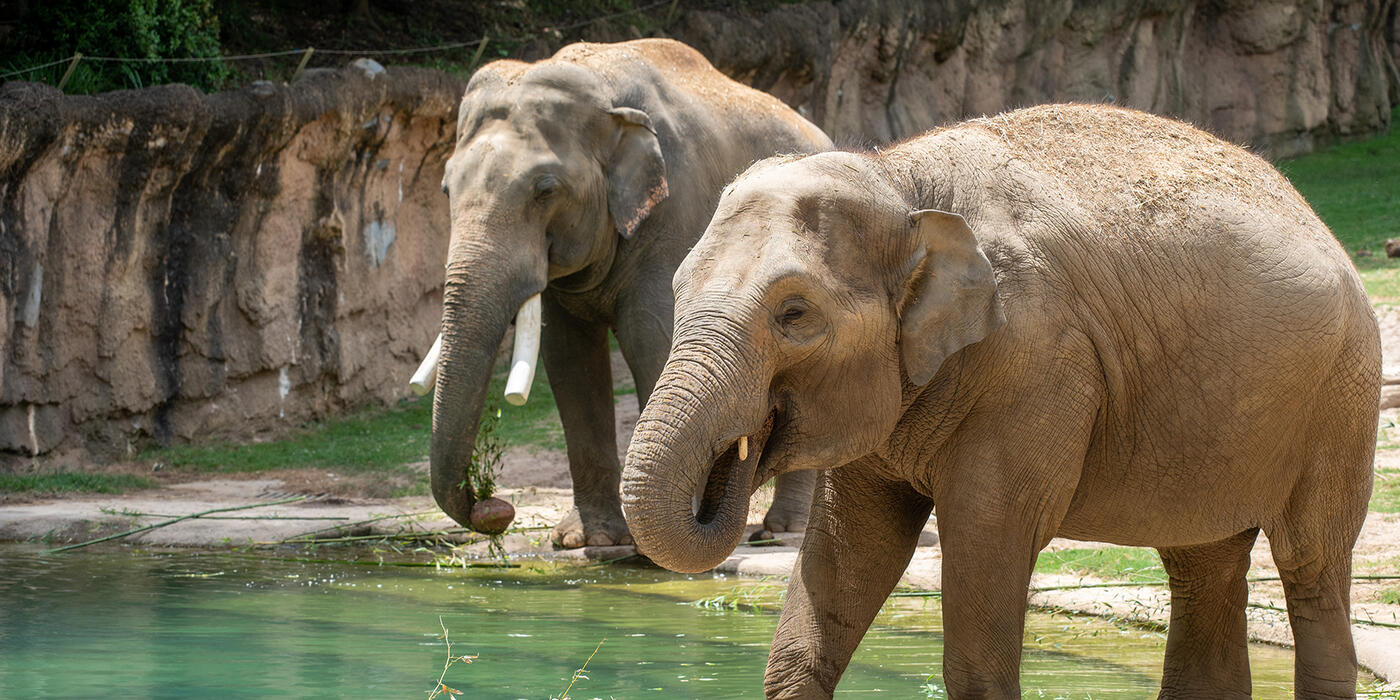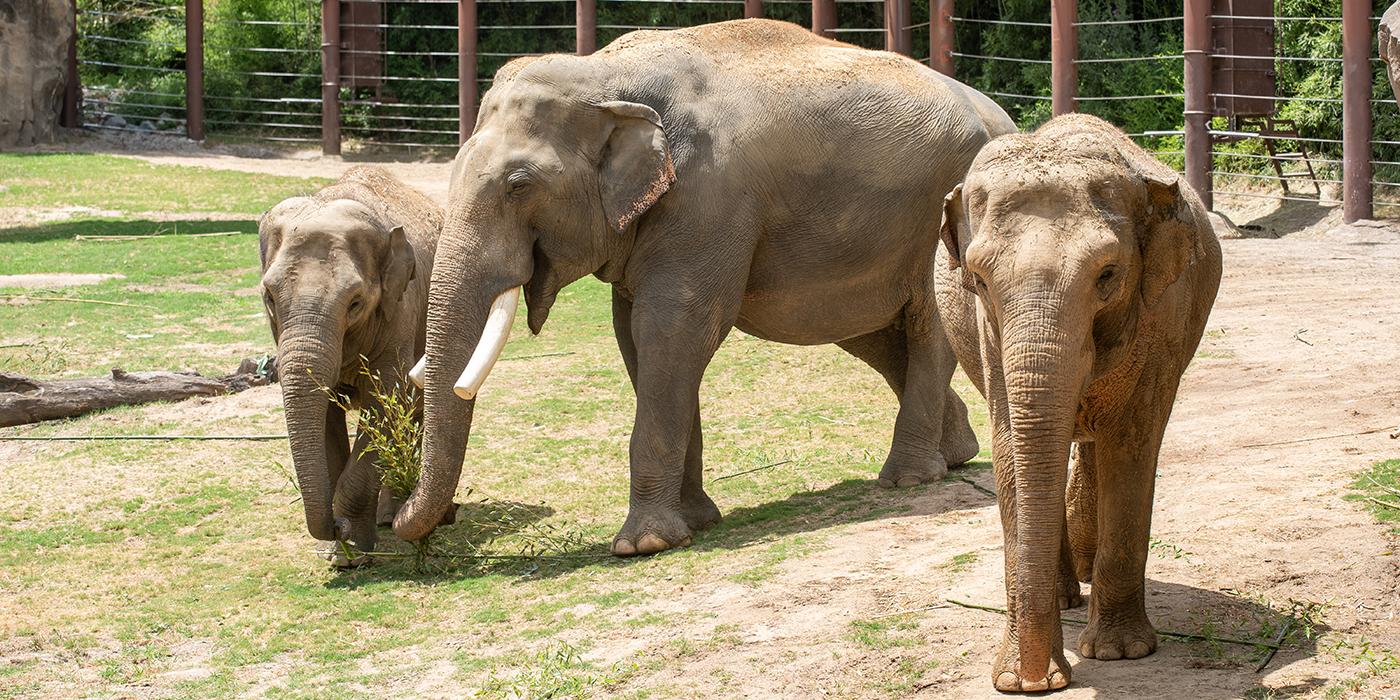Three Female Elephants From Calgary Zoo To Join National Zoo In Spring 2014
Our elephant herd is growing again—this time with three female elephants from Calgary Zoo in Alberta, Canada! Next spring, Kamala, Swarna, and Maharani, will arrive here on loan from the Calgary Zoo, expanding our existing herd to seven.
Kamala and Swarna were born in the wild around 1975 and came to the Calgary Zoo from the Pinnawala Elephant Orphanage in Sri Lanka in May 1976. Maharani, Kamala's daughter, was born at the Calgary Zoo July 14, 1990. At our Elephant Trails complex, they will join our four elephants: females Ambika (65 years old), Bozie (37) and Shanthi (38) and Shanthi's son Kandula (11). Records indicate that Kamala, Swarna, Bozie, and Shanthi lived at the orphanage together before departing for new homes in North America. Philanthropist David M. Rubenstein donated $2 million to enable us to bring the elephants to Washington. The funds will cover the costs of their transportation, elephant keepers' travel and training, health care and veterinary assessments, facility upgrades and in situ conservation.
When they arrive next spring, Kamala, Swarna, and Maharani will be in quarantine in the elephant barn for a minimum of 30 days, per standard procedure. An expert team of elephant keepers, nutritionists, and veterinarians will care for them. To keep the elephants mentally and physically stimulated, keepers will give them a variety of enrichment, including bamboo, boomer balls, and puzzle feeders. Following quarantine, Zoo staff will begin the process of introducing the new group to the Zoo's current elephants to form a multigenerational herd.
The Calgary Zoo first announced in April 2012 that its four elephants (three females and a male) would be relocated. Their decision was based on the elephants' long-term welfare needs that will be better served by living as part of a larger social group at a facility with more year-round space. After an extensive review of accredited facilities, Calgary Zoo chose us.
Our Elephant Trails exhibit was designed in keeping with the best practices for Asian-elephant management. It includes space for socializing, training and playing while providing the elephant staff safe access to the animals. Altogether, the facility can house eight to 10 adult elephants and their young.

Related Species:


